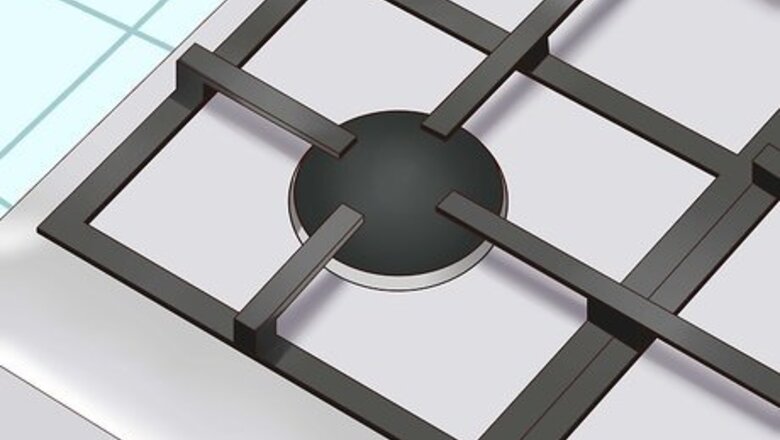
views
Sculpting with Silver Clay
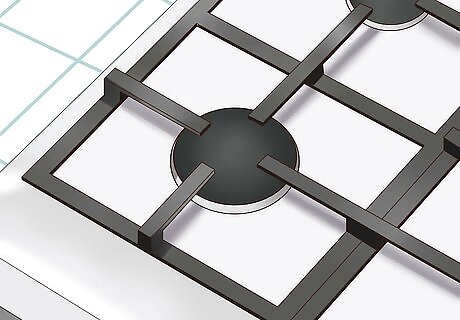
Select a heat source. After sculpting the clay, you'll need to fire it at high heat in order to burn away the the binding material and leave only the silver behind. Some brands of metal clay can be fired over a gas stove, while others require a gas torch or even a kiln. Check what temperatures you can achieve with your tools before you select a clay. You'll need a stainless steel mesh if using a stove. Find a heat brick if using a gas torch. A kiln is recommended for large or thick items. To estimate the temperature you can achieve on your gas stove, heat a small, thin aluminum pan on high and point an infrared thermometer at the surface once it is fully heated.

Purchase sterling silver clay. You may need to order this online, as not many art stores have it in stock. Pure silver clay is significantly more common, but the resulting jewelry will be less sturdy. You can purchase this in lump form for sculpting, as a softer paste extruded from a syringe for finer detail work, or even in "paper" form for origami designs.
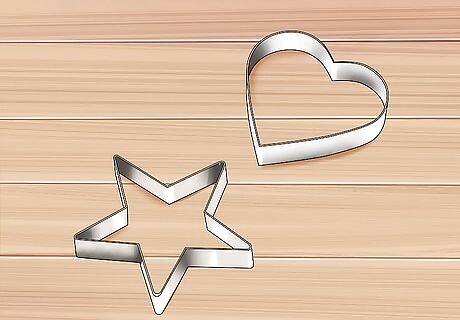
Form the clay into the design of your choice. You can sculpt this clay with hands or ordinary sculpting tools, add detail with a knife or wire, or cut it into shapes with stencils. The silver clay will shrink during firing, so make the jewelry slightly on the large side. Check the label for details, as shrinking can vary from 8% to 30% between products. You can push a metal stamp or any metal object into the clay to form a surface design.

Dry and sand the clay. Allow the silver clay to air dry overnight, or dry it thoroughly using a hairdryer. Smooth the surface with fine sandpaper.
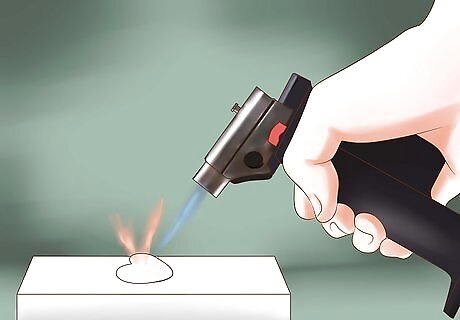
Fire the clay with a torch. If using a torch, place the clay on a heat brick, and the brick on a heat-safe surface. Hold the torch flame ¾ inch (2 cm) from the clay and heat until it catches fire, burns out, glows red, then reaches an even glow. Continue to heat for at least five minutes, or however long your clay instructions recommend. Look away periodically to relieve your eyes.

Fire the clay with a gas stove. If you are using a gas stove, follow these instructions instead: Place a piece of stainless steel mesh on a stove top burner. Turn the burner on to its highest setting. Observe the mesh to locate the hottest area on it. This area will glow. Turn the burner off and allow the mesh to return to it's normal color. Place the silver onto the hottest area of the mesh and turn the burner back on, this time to a low flame. Use tweezers or flat, non-serrated pliers to handle the silver. After the clay has burned off completely, turn up the burner and heat until the silver glows red. Turn it down again if it glows orange. Continue heating for ten minutes, then turn off the heat.
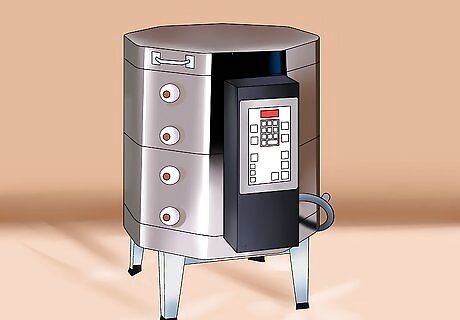
Fire the clay in a kiln. If you have a kiln, you'll be able to follow the precise recommendations on your silver clay. Maximum strength may be achieved with a long firing at relatively high temperatures, but there may be a faster firing option outlined on the instructions as well. A specialized jeweler's kiln will fire faster, but a ceramics kiln will work as well. The optimal firing temperature for most silver clay is 1650ºF (900ºC), held for 2 hours, but the jewelry might come out strong enough even at temperatures as low as 1200ºF (650ºC).

Quench the silver (optional). Letting the silver cool on its own is recommended. If you are in a rush, you can quench the hot silver in cool water to bring it down in temperature, although it may still not be safe to touch for a few minutes. This can cause structural issues if reheated for adjustment later, but thorough drying can prevent this. Never quench jewelry with embedded glass, precious stones, or other additions.

Polish the surface (optional). The silver will look white and a little dull after firing. If you want the shiny silver appearance you may be used to, brush the surface with a brass or steel wire brush, or polish with a buffing machine and jeweler's rouge.
Using a Jeweler's Saw and Buffing Machine
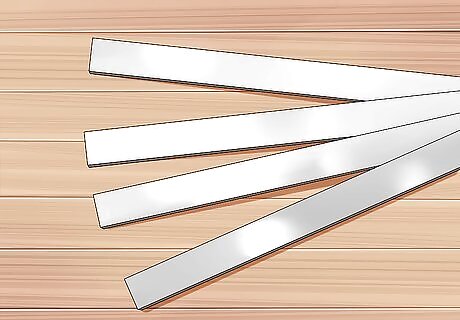
Pick the silver. For typical small jewelry such as an earring, you'll want a strip of sterling silver at least 2.5 inches wide and no more than 3.5 inches long. You can adjust these dimensions if you have a specific design in mind, but it may become a little harder to work with. 22 gauge and 24 gauge sheeting are commonly used. Sterling silver may be labeled "ster" or ".925." The number means that it is 92.5% silver (mixed with 7.5% of other metals).
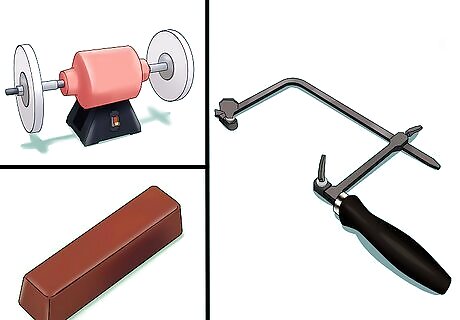
Gather supplies. Silver is soft enough to be cut by a jeweler's saw, but will need buffing afterward to smooth out the sharp edges. These specialized tools can be found at craft stores, hardware stores, or online. A jeweler's saw with a saw blade numbered 2/0 A small buffing machine with canton flannel wheels (or a bench grinder with the grinding wheel replaced) Jeweler's rouge or blue polishing compound. (Scratched silver may require white rouge or brown Tripoli polishing compound instead.) For earrings: sterling silver ear hooks, a drill, and a number 64 drill bit For surface designs: a metal stamp and hammer.

Assemble the jeweler's saw and buffing machine. Insert the saw blade into the upper end of the jeweler's saw and fasten the wing nut. Insert the lower end and tighten the wing nut while pulling on the frame to add tension. The buffing machine may already come pre-assembled, or you may need to consult to add the buffing wheels according to your model's instructions. Mount the buffing machine on your workbench. To test the saw, stroke the blade with a fingernail and listen for a "Ping" sound. If it does not make this sound, tighten the saw until it does when stroked.

Choose a design that you would like to use. You can sketch out the shape yourself, or find a design online or in magazines. For a pair of matching earrings, make two identical copies.
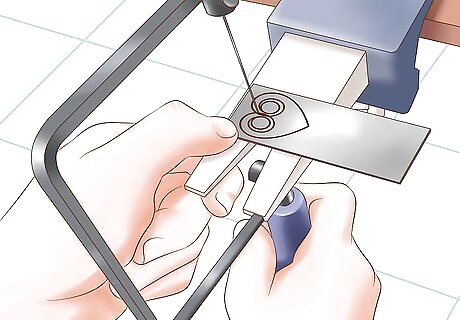
Cut the silver in the chosen shape. Tape the design over the silver sheeting and use the saw to cut through the outline. Use a slightly forward tilt to the saw as you cut. Move the saw up and down as you cut.

Stamp the clay (optional). The easiest way to add detail to the surface is to purchase a stamp designed to imprint silver. To stamp a thin sheet of silver, lay the stamp over the metal and hammer it in firmly. Make sure the stamp stays flat and in position while you hammer it several times.
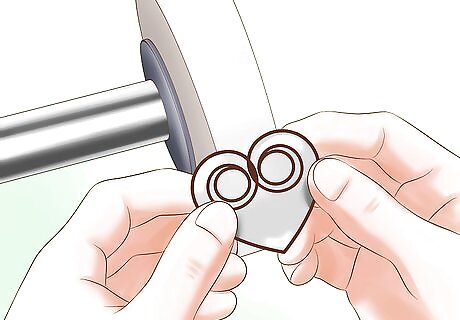
Polish the jewelry on the buffing machine. Following your model's instructions is recommended. Generally speaking, the jeweler turns on the machine and applies polish (jeweler's rouge) sparingly to the wheel. Gently touch the jewelry to the surface of the wheel to smooth out rough edges and polish the surface.
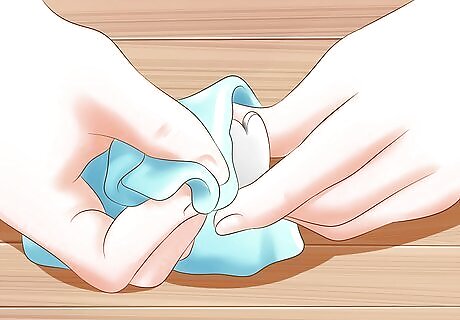
Wash in warm soapy water. This will remove polish residue. Dry with a soft, clean cloth, preferably wool or chamois.

Attach an ear hook to each earring. Drill a small hole near the top of each earring, insert one end of the hook, and twist the hook around itself or tuck it over the earring edge to attach it firmly. Obviously, you can skip this step if making jewelry that does not require a hook attachment
Soldering Silver
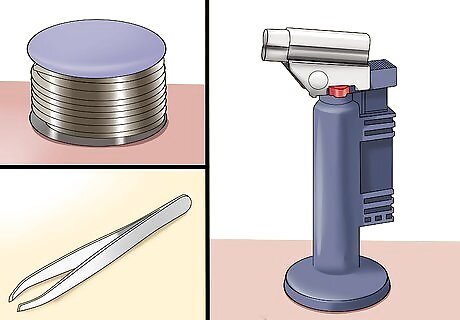
Gather materials. If you want to join multiple pieces of silver together, soldering is typically the easiest home method. It still requires quite a bit of preparation, and the following materials: Use a "medium" or "hard" silver solder made from silver alloy, not standard solder. Avoid solder containing cadmium unless you have a respirator. A small oxy-acetylene or butane torch, preferably with a flat "chisel tip." Any brazing or soldering flux labeled as suitable for silver. Copper tongs and tweezers (of any metal) for handling the silver. A "pickle" solution for soldering, heated according to label instructions before you begin.
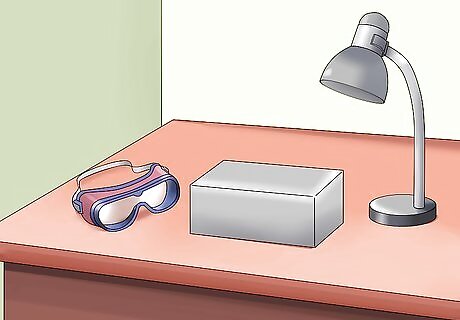
Set up a safe work area. You'll need a well-ventilated room and a heat-resistant work table, plus a heat brick to work on. Goggles are essential for detail work, to protect yourself from spatter during close inspection. Gloves, a denim or leather apron and tight-fitting, non-synthetic clothing are good additional precautions. You'll need a container of water anyway to rinse the jewelry, but a fire extinguisher doesn't hurt if you are working in a room with flammable materials.

Clean and apply flux. If the silver is greasy or has been heavily handled, rub on a degreasing solution. Dip in the pickle solution if the silver is black from oxidization. Once clean, brush the flux onto the silver, over the areas to be joined. Powdered flux must be mixed into a paste or liquid form first. Check the instructions for details.
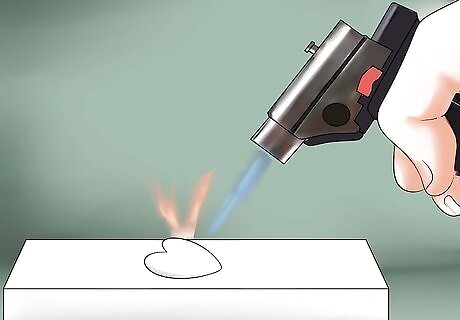
Solder the silver. If you have never soldered anything before, this in-depth guide may help. Alternatively, you can follow these quick steps: Position the objects carefully on the heat brick, then apply a chip of solder (or a dab of solder paste) with tweezers. Heat from about 4 inches (10 cm) away, focusing on the thicker piece of silver. Do not heat solder directly. Hold thin pieces of silver with tweezers to prevent melting.
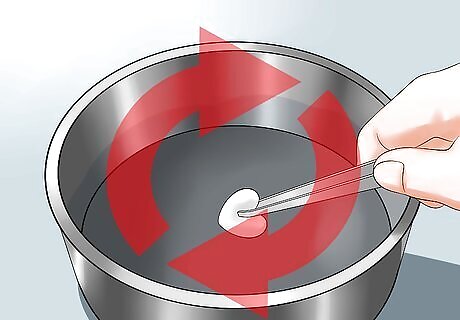
Rinse, pickle, and rinse again. Once the solder has melted along the gap between the pieces, turn off the heat and wait a minute or two for the solder to solidify. Use your copper tongs to dip the silver first into the water bath, then into the pickle solution to remove oxidization created during soldering. Rinse a final time in water, then pat dry. Avoid putting the pickle in contact with skin and clothes, as it can be corrosive. Non-copper tongs may react with the pickle, corroding the metal. If you prefer the look of "aged" silver, you can skip the pickle.
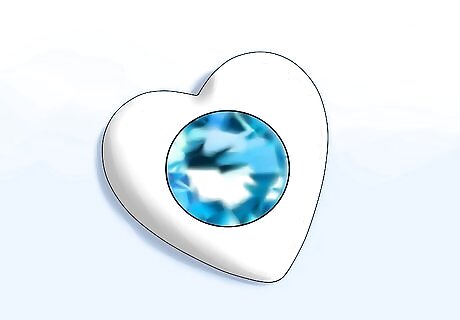
Add gemstone or glass (optional). These are best added to jewelry with a two-part epoxy glue. Solder a silver "bezel cup" to the jewelry, sand the walls down if necessary with coarse sandpaper, then glue in the stone and let dry as instructed by the epoxy label.
Forging Silver Jewelry
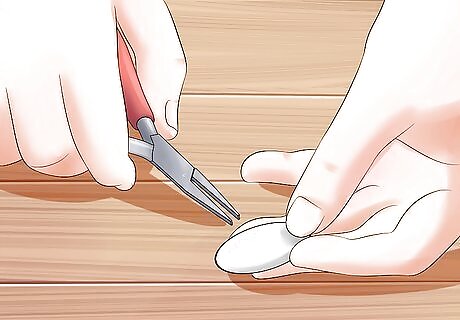
Twist with flat pliers. Serrated tongs will mark the silver, so precious metal jewelers use flat pliers only. You may find several sizes and shapes handy if you're making a lot of jewelry, including round nose pliers and wire cutting pliers.
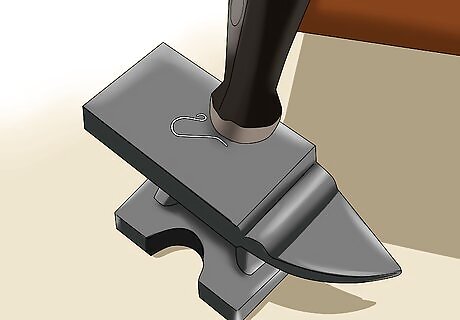
Hammer silver wire into jewelry. Silver is quite malleable, and thick silver wire is often shaped into necklaces or arm bands. Simple lay the wire on a small anvil or other flat, hard metal surface and tap repeatedly and gently with a mallet or hammer into the desired shape. To attach a pendant, wrap the wire around an object, or solder it to a pendant with a sterling silver attachment point.
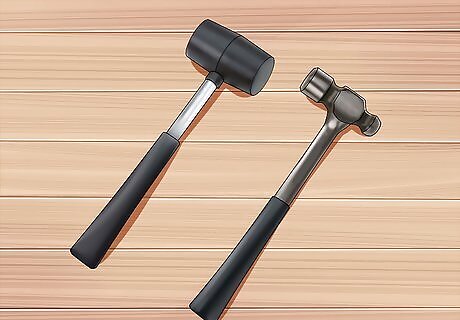
Use different hammers for different effects. For precise control, you can use several hammers, most commonly a flat mallet and a round ball peen hammer, or a couple examples of each in different sizes. Once the shape is complete, you can use a texturing hammer to alter the surface feel, or a planishing hammer to smooth out the dents on a bent or curved surface. For the most predictable and controlled effect, let the hammer fall from directly above the silver, striking the surface at a 90º angle.
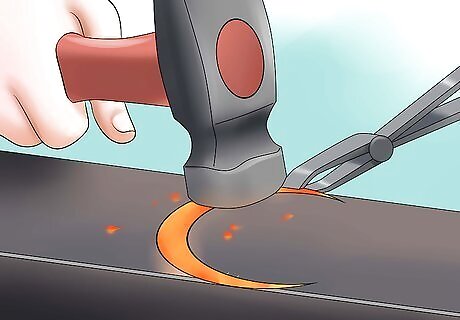
Try hot forging. This is not a common approach for silver, since it can be manipulated while cold. However, if you have some experience under your belt and want to experiment with tight, intricate curves, hot forging could be the next step. You'll need a small gas forge — or possibly an electric oven with excellent temperature control — able to heat the silver to a cherry-red glow and keep it stable at that temperature while you manipulate it with pliers and hammering. The correct temperature is typically around 1100ºF (600ºC), but this varies depending on the exact alloy of your sterling silver.














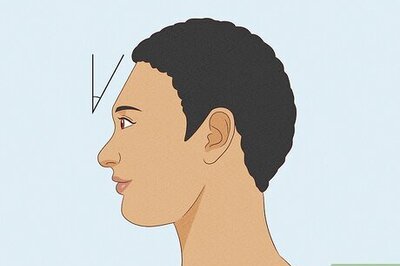




Comments
0 comment